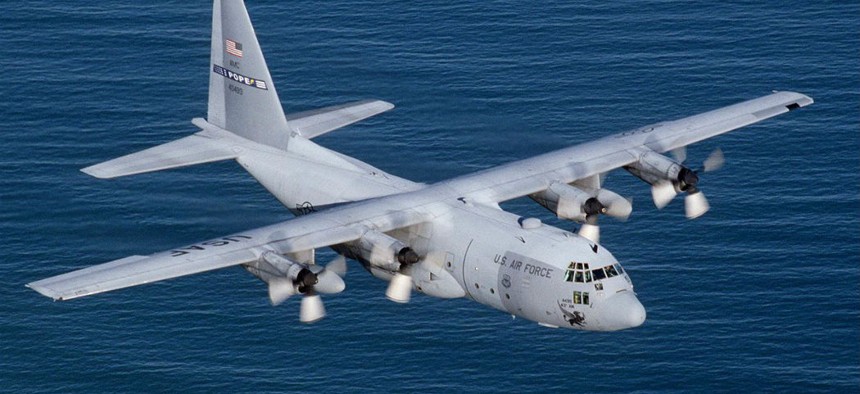Air Force evaluates commercial options for new electronic warfare aircraft
A next-generation electronic warfare aircraft may utilize a small, powerful commercial jet frame.
The Air Force is exploring commercial aircraft models for its next generation electronic warfare (EW) aircraft to replace the EC-130H Compass Call with a smaller, self-defending, and more powerful jet.
With plans to field the first EX-C Compass Call in 2020, the Air Force hopes to have 10 operational EX-Cs by 2029.
According to a spokesperson for the Air Force, the EX-C will be developed using commercial off-the-shelf hardware technology for the EX-C airframe. L3 Communications, the developer responsible for integrating EW software with the C-130H airframe to create the EC-130H, will lead the decision on which commercial airframe will be used.
"We won't speculate on the outcome of contractor-led competition… we will follow the process and results closely and ensure the requirements are set,” said Capt. Emily Grabowski, an Air Force spokesperson.
The airframe chosen will carry an EW payload similar to that of its EC-130H predecessor. It will be installed with a radio frequency countermeasure technology and geo-location technology that pinpoints enemy signal emitters for precision jamming. The EX-C will also have self-protection abilities, potentially using electro-optical countermeasure technology to avoid being detected and targeted from the ground or air.
EW technology also includes multi-mode radar detection and suppression equipment, and the EX-C will likely have radar jamming pods and a communications countermeasure system in addition to that equipment.
The EX-C is also expected to have more automated technology, requiring less than the 13 crew members currently needed for EC-130H missions.
Operationally, the EX-C will assist in helicopter refueling missions, precision strikes, and ground operations, as its electronic signal jamming capabilities and ability to suppress enemy electromagnetic activity can reduce the threat of the opponent’s ground-to-air defenses, providing cover for ground operations and aircraft penetrating enemy airspace.
The Air Force said that the Air Combat Command and Air Force Material Command held an industry day in November of 2015 for aircraft and airframe structural components, which allowed the service to explore options for the EX-C.
Conforming with the proposed EX-C development schedule, the service cited a capabilities request for information on the delivery of a preliminary aircraft in 2017, with nine more delivered over the course of nine years. The Air Force’s announcement also listed requirements for the new aircraft, which included: having EO/IR countermeasures, being able to defend against surface to air missiles, and having the capacity to deliver at least 170 kVA of power to the primary mission equipment.
A decision on which commercial airframe will be used for the EX-C is expected this summer or early fall.
NEXT STORY: Joint DOD office enlists in avionics effort





